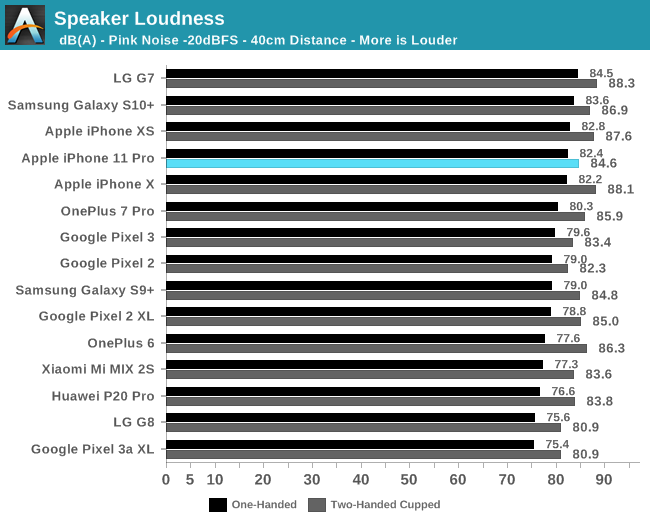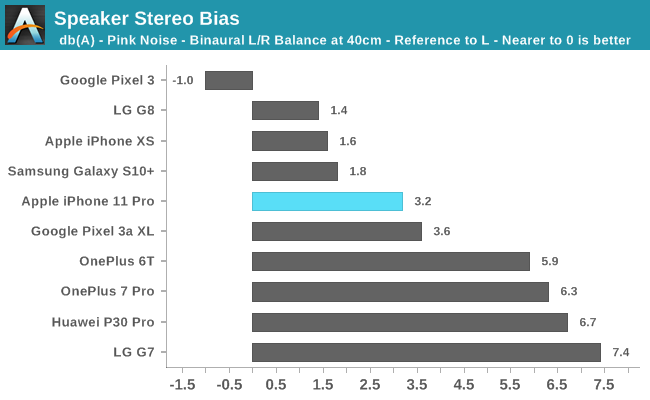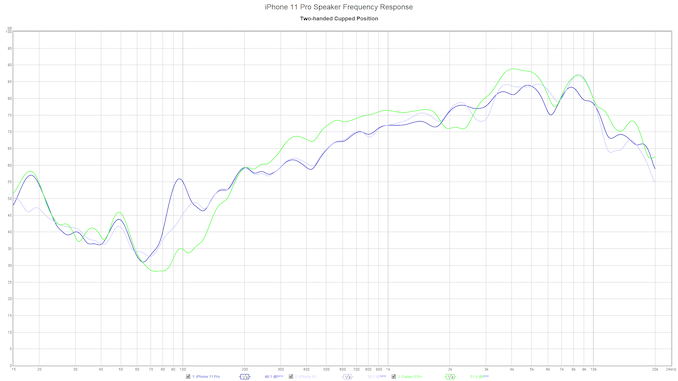The Apple iPhone 11, 11 Pro & 11 Pro Max Review: Performance, Battery, & Camera Elevated
by Andrei Frumusanu on October 16, 2019 8:30 AM ESTVideo Recording
Video recording on the iPhone is known to be extraordinarily good in terms of quality. The iPhone 11 series is said to improve in this regard thanks to an improved HDR with more dynamic range (though Apple still stores video in SDR format). Naturally of course what’s also exciting is that we’re now able to capture video with a wide-angle lens, and seeing a lot more content of a given scene.
Apple has improved the EIS this generation, and it now results in a much smoother video capture experience than the past iterations. When you have with a lot of detail in a scene though, you can sometimes see the jitter caused by the OIS and EIS interacting with each other.
In the wide-angle recording, the EIS was a bit haphazard. In the first part of the video walking down the path it doesn’t look to be stabilizing much at all, when I turn left to the second path suddenly the EIS kicked in and things were a lot less shaky, and it then again loses the stabilization for few steps until it finally resumes again. This happened all three recordings with the wide-angle camera, and I don’t know it was me holding the phone any different between those two paths.
The quality and detail of the videos are all great. The one thing noticed though is that there’s the occasional exposure flicker in some areas. In effect Apple here is doing two exposures per frame and combining them together like Smart HDR – we can notice that in parts of the scene, and most visible the sky is flickering or pulsing in brightness.
The handling between the three camera sensors is very good, it’s particularly fast and seamless to switch between the main and wide-angle modules, while there’s a small delay to switch to the telephoto module. Switching between the three modules is only possible in 30fps recording modes; it’s still possible to record 60fps in any of the three modules but you have to start out the video with the camera that you want to use, and you’ll be limited to digital zooming only while recording.
Speaker Evaluation
In terms of audio for the iPhone 11 series, Apple’s big addition is the inclusion of Dolby Atmos. Naturally you have to watch multi-channel audio content to be able to take advantage of the feature. For regular stereo audio playback, we investigate if Apple has done any changes to the speaker setup and if it differs to that of the XS.

In terms of audio volume, the iPhone 11 Pro is ever so slightly quieter when being held in portrait mode. The bigger difference that’s definitely more audible is when holding the phone in landscape mode with both hands and the palms cupped – the usual way one would hold a phone in landscape. Here it’s 3dB quieter than the iPhone XS, which is a noticeable amount.

Investigating the phone’s stereo bias thanks to a binaural microphone setup, we see that that things have notably regressed for the iPhone 11 Pro when compared to the XS. It’s relatively normal for the main speaker (Right side) to appear louder, however it’s extremely weird that it’s now 1.6dB more biased than on the iPhone XS. Indeed when comparing the 11 Pro and XS side-by-side, and muting the main speaker by holding a finger on it, volume being equal and otherwise calibrated between the two phones, it’s immediately audible that the 11 Pro earpiece speaker is much quieter compared to what we experience on the XS.
This has a rather large knock-on effect on the spatial sound reproduction of the 11 Pro as it just isn’t able to fill up the surrounding area quite as well as on the XS.
Looking at the frequency response between the 11 Pro and the XS, we see that things are extremely similar up to the high mid-ranges, with a more noticeable peak at 95Hz for the 11 Pro. Towards the treble we see some more deviations, it’s here that the 11 Pro is a bit quieter and I think that’s due to the weaker earpiece speaker.
Overall, the sound signature of the iPhone 11 Pro hasn’t changed all too much, and it is actually more of a downgrade in audio playback due to the weaker earpiece speaker calibration. The Galaxy S10’s notably stronger lower mid-range and mid-range still make for a much superior audio playback and is in my experience the device to beat in terms of speaker quality.











242 Comments
View All Comments
Jon Tseng - Wednesday, October 16, 2019 - link
Nice! Any additional thoughts on the U1 UWB chip. I guess not much you can do with it yet but to me the possibilities are intriguing...Andrei Frumusanu - Wednesday, October 16, 2019 - link
I think Apple has more plans with it in the future, but yes right now it doesn't do very much.tipoo - Wednesday, October 16, 2019 - link
Definitely think it's getting the hardware ready for the AR glasses. Hyper precise location tracking just by putting your phone down on a desk and having the U1 chips communicate.Diogene7 - Wednesday, October 16, 2019 - link
I am dreaming of that the Apple U1 UWB chip could be used in a not too distant future (2020 / 2021) for precise spatial locasization for at (short) distance wireless charging : by knowing where exactly in space an Apple device is, Apple might be able to dynamically and efficiently focus wireless energy transfer maybe through wireless resonant charging (Airfuel) for an iPhone or through RF charging like Energous / Ossia for recharging Apple Airpods from an iPhone...I think I am dreaming, but just hope that Apple is working hard to make wireless power at a short distance a reality : I would dream to be able to drop my iPhone anywhere on my bedside table, and that it automatically recharge during the night from a base station up to a distance of 1,5 foot / 50cm : it would bring sooooo much more convenience than Qi wireless charging...
patel21 - Wednesday, October 16, 2019 - link
Man, you are lazy.Diogene7 - Wednesday, October 16, 2019 - link
@patel21 : How many times do you still plug an Ethernet cable to your laptop to surf on internet instead of using WIFI ? WIFI is simply more convenient...Similarly, wireless charging at a distance (up to ~ 1,5 foot (50cm)) would be so much more convenient than to have to plug a cable to recharge a device
It also true for Internet of Things (IoT) devices : tjere seems to be some studies showing that consumers stop using many IoT devices that work on batteries because they have to change the batteries
I strongly believe that wireless charging at a short distance is a requirement for the sale of IoT sensors to really take off because managing 10s or 100s or more of IoT devices with batteries is not really manageable by consumers in the long run...
Molbork - Tuesday, June 16, 2020 - link
And you just halved the power efficiency of your laptop and devices. EM transmission power is 1/r^2, checking your laptop could cost you 2-3x more than a direct connection at longer distances.Henk Poley - Friday, October 18, 2019 - link
I wonder if they'll do things like heart- and breathing-rate measurement, and counting of people around you (how many hearts). Such as was demonstrated for radar based baby monitoring. Fairly low power, a 'cigarette pack' size device attached to a baby cot could work for half a year by only periodically measuring.Could be interesting for meetings, that your phone knows everyone has arrived, people were agitated, etc.
Adonisds - Wednesday, October 16, 2019 - link
Why is it required less than double the power to produce twice the display brightness?michael2k - Wednesday, October 16, 2019 - link
Displays aren't actually perfectly transparent, and the light generating devices might absorb some of the energy instead of transmitting it.Increasing transparency is one way to produce more brightness with less energy.
Reducing the amount of energy absorbed by the LEDs (and thus transformed into heat) is another way to produce more brightness with less energy.
Changing the LEDs basic chemistry to more efficiently transform electricity into light is a third way.
Fundamentally less waste heat, more light.